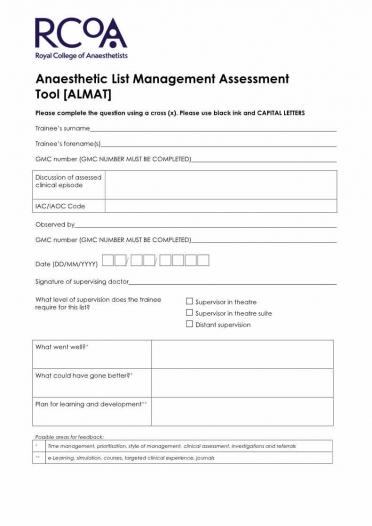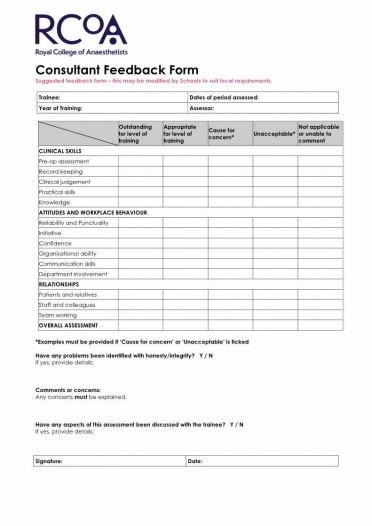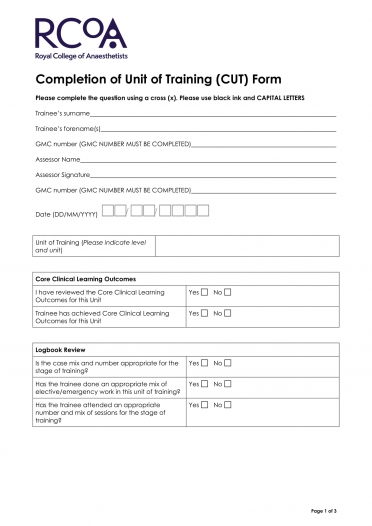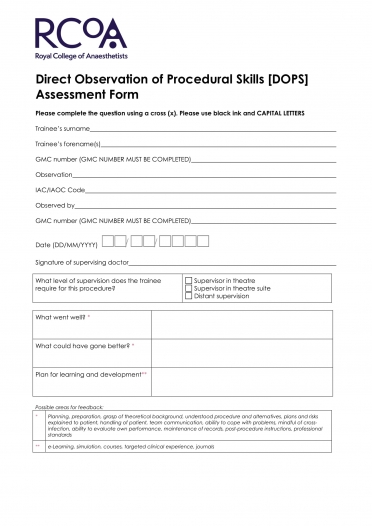2010 Workplace based assessments
The 2010 training programme in anaesthetics uses workplace-based assessment as part of the assessment process for each unit of training.
- Direct Observation of Procedural Skills (DOPS)
- Anaesthesia Clinical Evaluation Exercise (A-CEX)
- Multi-Source Feedback (MSF)
- Anaesthesia List Management Assessment Tool (ALMAT)
- Case Based Discussion (CBD)
The DOPS, A-CEX and ALMAT are used during clinical sessions, and the assessments are based on the observed performance of the trainee’s skills, attitudes and behaviours, and knowledge. The CBD is used away from the clinical environment – it allows the assessor to question the trainee about a clinical episode to assess the trainee’s knowledge and rationale for their actions or what they would do if presented with the clinical scenario.
Curriculum for a CCT in Anaesthetics
The number of required assessments is defined in the 2010 Curriculum for a CCT in Anaesthetics and the assessment blueprint for each level of training which can be found in annexes B, C, D, E, and F.
The tools can be used for formative assessment. Formative feedback can be used by the trainee for self-directed learning for areas where there are deficiencies in performance, and also in those areas where a trainee has done well.
The rationale for the College’s assessment strategy can be found in section 8 and appendix 5 of the curriculum (Edition 2, August 2010).
A trainee is also assessed using a Multi Source Feedback (MSF). Unlike the other workplace based assessment tools, the MSF looks at professional attitudes and behaviours, rather than the clinical skills and knowledge.
All the workplace based assessment tools are included in Lifelong Learning.






